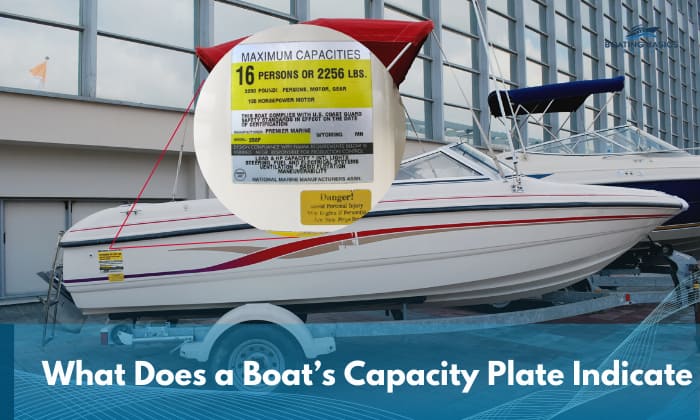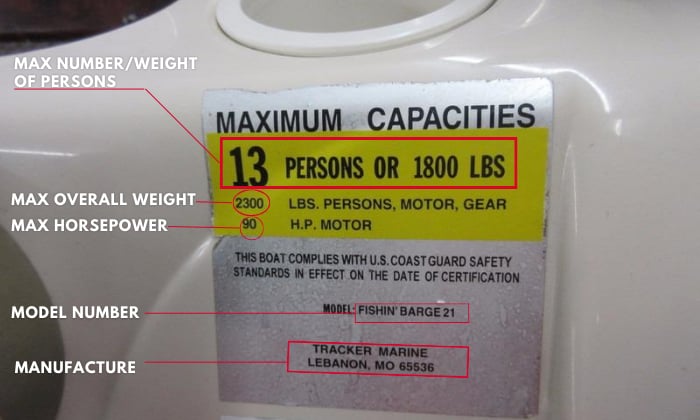Have you looked at boats lately and their capacity plates piqued your interest? So what does a boat’s capacity plate indicate? Understanding it can make a world of difference when you’re out on the water.
It indicates two vital pieces of information: the maximum weight the boat can safely carry and the number of individuals it can accommodate without compromising safety.
Allow me to explain in a more detailed way below.
Table of Contents
What a Boat’s Capacity Plate Tells You
It simply informs you or anyone who needs to know the boat weight limit. How much weight can the whole vessel handle? What’s the exact number of passengers it can carry?
Any vessel’s capacity plate can answer both of these questions. The plates have been standard requirements for boats less than 20 feet in size for decades now, and they also include the manufacturer, vessel model, serial number, and horsepower.
The rated capacity is often a multiplier (commonly either 5 or 7). It represents how much weight it would take to make your boat sink at the dock in calm water.
Notice the specificity in the phrase “in calm water”? That only means you should be willing to make adjustments in carrying loads when boating in rough water.
Now, you’re probably wondering about how the number of passengers and the maximum weight relate to each other. What if you already exceeded the weight limit but not necessarily the passenger limit?
For instance, I’ve been asked questions like, “Do kids and babies count in the passenger limit? What if I’m bringing along 4 of my nephews and nieces all below 3 years of age?”
Well, that’s precisely why there are two limits indicated in the plate. To be completely safe, though, it’s always best to make sure that you are not exceeding the maximum weight. It’s not a scenario where both limits must be met, in short.
I’d be more concerned about the lack of boat space you may end up with. A U.S. Coast Guard naval architect buddy of mine has made it clear that capacity plates do not relate to stability.
It’s also recommended practice to never go up to the capacity of any kind of watercraft.
How Are Boat Weight Capacities Calculated?
Incidentally, people have also asked how to calculate a boat’s capacity. Just follow this boat capacity formula. It’s based on the factors of 5 or 7 I’ve mentioned above.
- Maximum weight capacity = Displacement weight / 5 or 7 (depending on the boat type)
- Number of people = (Person’s weight + 32) / 141
Take note that these formulas only apply to boats under 20 feet. If you happen to own a boat that’s larger (20 feet and above), manufacturers will opt for a stability analysis rather than the weight figures.
Federal Law Requirements in Capacity Plates
Other than the necessity for any single-hulled vessel less than 20 feet to display capacity plates, these are the other boat capacity plate requirements you should be mindful of:
- It should be correctly placed for guaranteed visibility, often near the helm.
- Be sure to adjust the boat’s capacity based on the different conditions on the waterways you frequent to prioritize everyone’s safety (having fewer people on the boat in rough weather, for example).
Conclusion
I hope you’ll remember the answer to “What does a boat’s capacity plate indicate?” given its crucial nature. The vital information you can gain from it serves as your ticket to a safer, more fun-filled time boating.
So, the next time you set out on a boat you’re not familiar with and feel it’s a bit more crowded than you’re used to, take a moment to glance at that unassuming piece of metal. It may just give you peace of mind.

“My intention from the first day establishing Boating Basics Online is to provide as much help as possible for boaters who want to experience a first safe and convenient trip. So feel free to join us and share your beautiful journeys to the sea!”




